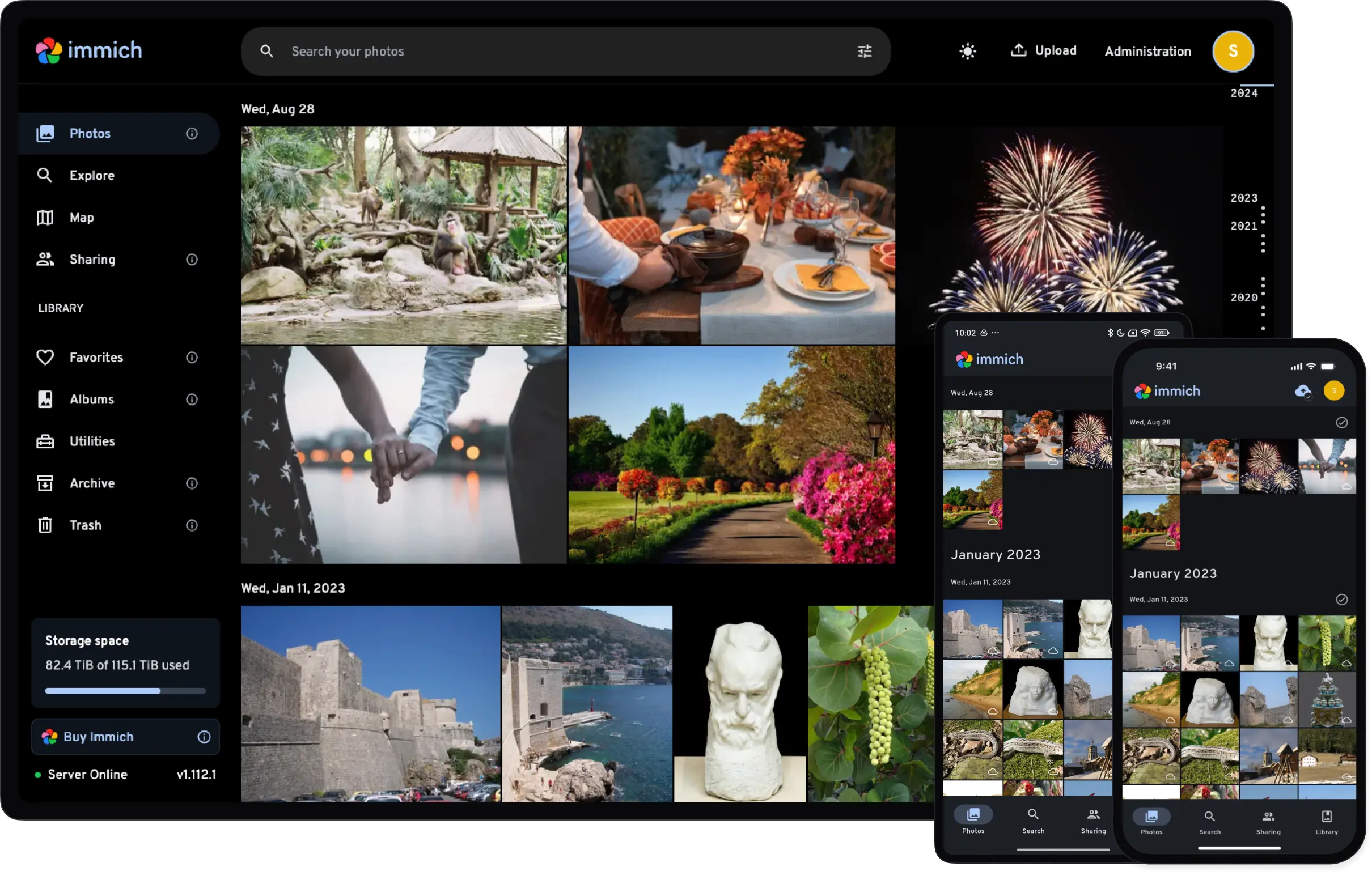Immich is a self-hosted photo and video management solution. Easily back up, organize, and manage your photos on your own server.

Why Immich?
-
Immich is a self-hosted photo and video management solution that allows you to easily back up, organize, and manage your photos and videos on your own server. It helps you browse, search, and organize your photos and videos with ease, without sacrificing your privacy.
-
It has a user-friendly interface, supports multiple devices, and offers advanced features like facial recognition and geolocation tagging.
-
Importantly, Immich is open-source and free to use and all data will be stored on your own server privately.
Installation using Docker
If you want to install with kubernetes then read this article.
Create a docker-compose.yaml file
1
2
3
4
5
6
7
8
9
10
11
12
13
14
15
16
17
18
19
20
21
22
23
24
25
26
27
28
29
30
31
32
33
34
35
36
37
38
39
40
41
42
43
44
45
46
47
48
49
50
51
52
53
54
55
56
57
58
59
60
61
62
63
64
65
66
67
68
version: "3.8"
name: immich
services:
immich-server:
container_name: immich_server
image: techthinkerorg/immich-server:v1.135.3
restart: always
volumes:
- upload_location:/usr/src/app/upload
- /etc/localtime:/etc/localtime:ro
env_file:
- .env
ports:
- 2283:3001
depends_on:
- redis
- database
immich-machine-learning:
container_name: immich_machine_learning
image: techthinkerorg/immich-machine-learning:v1.135.3
restart: always
volumes:
- model-cache:/cache
env_file:
- .env
redis:
container_name: immich_redis
image: techthinkerorg/immich-redis:v1.135.3
restart: always
healthcheck:
test: redis-cli ping || exit 1
database:
container_name: immich_postgres
image: techthinkerorg/immich-postgres:v1.135.3
restart: always
ports:
- 5432:5432
environment:
POSTGRES_PASSWORD: ${DB_PASSWORD}
POSTGRES_USER: ${DB_USERNAME}
POSTGRES_DB: ${DB_DATABASE_NAME}
POSTGRES_INITDB_ARGS: --data-checksums
volumes:
- db_data_location:/var/lib/postgresql/data
volumes:
upload_location:
driver: local
driver_opts:
type: none
device: ${UPLOAD_LOCATION}
o: bind
db_data_location:
driver: local
driver_opts:
type: none
device: ${DB_DATA_LOCATION}
o: bind
model-cache:
driver: local
driver_opts:
type: none
device: ${MODEL_CACHE}
o: bind
networks: {}
Create .env file
1
2
3
4
5
6
7
8
9
10
11
TZ=Asia/Kolkata
VITE_SERVER_URL=https://immich.example.com
IMMICH_SERVER_URL=https://immich.example.com
# The location where your uploaded files are stored
UPLOAD_LOCATION=/srv/immich/upload
# The location where your database files are stored
DB_DATA_LOCATION=/srv/immich/pgdata
MODEL_CACHE=/srv/immich/model_cache
DB_DATABASE_NAME=immich
DB_USERNAME=postgres
DB_PASSWORD=postgres
Create data directories
Make sure you have updated the directories to .env file.
1
2
3
mkdir -p /srv/immich/upload
mkdir -p /srv/immich/pgdata
mkdir -p /srv/immich/model_cache
Run docker
1
docker-compose up -d
Your immich installation is complete. Now visit URL: http://localhost:2283